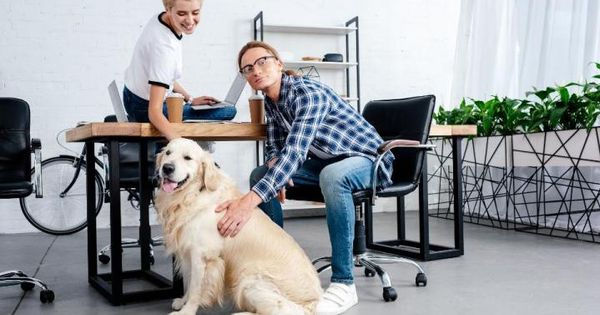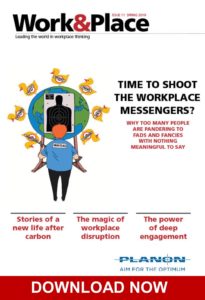The potential messianic marriage of coworking and retail has stirred quite a bit of fervor recently, especially given WeWork’s recent move into the space with the debut of its WeMRKT retail concept and also its reported potential relationship with J. Crew.
Unfortunately, regardless of the coworking company in question, this fervor is far more bark than it is bite. And for those who have hoped that further developments across the coworking landscape might inoculate the retail industry from the impending self-induced retail zombie apocalypse that is currently underfoot, please listen to the following words carefully:
Calm. Down.
The marriage of coworking and retail, while novel and possibly incremental on the margins, stands no chance of making a material impact on the performance of the retail industry.
There are three structural issues within the concept that limit its long-term growth prospects:
1. The Experiment Has Already Been Run — Just Look At Airports
A variant of the coworking/retail marriage or experiment has already been run. Just look at airports. Airports, essentially, are “at-work” retail. Day after day business travelers wander through airports on their way to and from their homes or on their way to business engagements. Retailers have been trying to appeal to the psychology of the business worker/traveler for some time now.
The result?
Airport retail is often not captivating, sometimes soulless, frequently difficult for the retailers themselves to manage, and therefore not always advantageous from a return-on-investment standpoint. If retail in airports were working like gangbusters, specialty retailers across the country would be rushing to open up stores in airports, especially given that mall vacancy rates are also at a six-year high. But, no. Instead, consumers are left with what feels like six variants on a newsstand within every airport concourse.
Don’t try and quote recent statistics on the success of airport retail either. As the Wall Street Journal mentions, there are many factors at play that account for this performance. For example, consumers are captive, now almost forced to bring their own food and drink on planes, and so airport retail has become specific to certain need states. Within a coworking setting, however, the consumer is not faced with these same artificial constraints.
At work, a consumer can quickly whip out his or her Amazon app or go on his or her desktop, in the guise of pretending to work, and order up anything he or she forgot or anything that he or she wants to have waiting for him or her at home. One need look no further than the example of high school kids ordering takeout on DoorDash while school is in session—the world is just that available.
In an airport, there is a limit to what we can consume, and even in this world the retail that is there is still Mr. Bean on the sexy scale.
2. Operating Retail And Coworking At Scale Will Be Near Impossible
Even if one can get past the last point, managing and operating retail within coworking spaces for large-scale national impact is a fool’s errand for a few reasons.
First, retailers traditionally have difficulty operating their concepts in footprints that vary from their norms. Macy’s is smart to try and leverage b8ta to overcome this difficulty on the technical side, but the code on how to rinse and repeat such efforts across numerous disparate locations is nowhere near cracked. Even Macy’s is first trying to crack the code and leverage b8ta only within its own footprints.
Why is it so hard?
Variances in location dynamics make supply chain forecasting, allocation, replenishment, in store operations and staffing even more complex than they already are for retailers. It is much easier if every box is close to the same size and operates roughly the same way. Involve different sized footprints, different operational parameters, and different partners, and things get complicated pretty quickly.
Visual recognition technology could help over time by reducing the need for sales staff via checkout-free experiences, but adopting this technology at scale will take time and also could be limited to certain types of retail, i.e., commodity and packaged-good type purchases.
Second, coworking even in and of itself is limited in its own scale and reach.
Regardless of whether one buys into the argument that coworking is already an overvalued concept, it is hard to see how coworking impacts retail beyond major metropolitan areas.
Coworking is not a concept for locales like Scottsbluff, Nebraska, for example, so consumers across the country will still need more efficient means of physical retail than coworking can ever provide.
3. Nobody Wants To Take His Or Her Family To Work On The Weekends
An often overlooked statistic in the retail world is just how much shopping within physical locations is done on the weekends. According to National Real Estate Investor, approximately 50% of all retail traffic occurs across Saturday and Sunday. Weekend traffic is therefore the lion’s share of retail or, better yet, what is most under siege via the impending apocalypse.
In a world where the only remaining points of differentiation between a physical and a digital retail experience are taction (i.e. touching, feeling, trying things on) and the memories and delights of being somewhere, it is hard to imagine a world where shopping, which is currently a desired weekend social activity, becomes a weekday workplace activity instead.
It won’t happen.
Nor will it happen on the weekends either. On the weekends, when people, and especially families, desire memorable social things to do, the last thing thing they will want to do is to go back into their places of work to shop.
Shopping has always been a refuge, and it always will be. Amazon and social media have just made the refuge more convenient and omnipresent. But, shopping at work isn’t a refuge, and it is most certainly not one on the weekends. Throw kids into the mix and then things get even worse.
Imagine saying, “Honey, instead of going to the mall, let’s take the kids to my office and try on a few things?” I can’t even bring myself to type this last line, let alone say it aloud. It is the wrong psychology.
Retail will correct itself, but it will correct itself based on the emergence of new entrants that get the punchline to the joke and that figure out innovative ways to play on the sensory delight of escaping to somewhere memorable, all within the halo of convenience and the economy of time.
Psychologically humans desire a third place—a social place of refuge outside their work and their homes. Hence, by definition, work can never be that place.
And, therein, also lies the answer to the retail apocalypse.
Read Full Article from coworking – Google News https://ift.tt/2L48u8J




